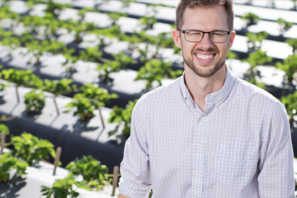NVIDIA Clara Discovery aims to give researchers tools needed to discover promising pharmaceuticals faster.
Parasitic nematodes cause $125 billion in agricultural damage around the world each year, but University of Florida scientists hope to alleviate some of that destruction.
An article profiled exciting new technology which promises a new way to detect recycled and counterfeit electronic parts.
R. Perry Frankland Associate Professor of Management and two co-authors won first place at the U Penn Wharton People Analytics Conference.
A tastier strawberry may come from a computer. New University of Florida research shows artificial intelligence can help scientists breed more flavor into the fruit.
Researchers with UF Health announced today that they have collaborated with NVIDIA researchers to create GatorTron.
Since its foundation in 1960, the International Society of Nephrology has encouraged global networking, building partnerships within the nephrology community and organizations with aligned missions to combat non-communicable diseases.
Cutting-edge data collection and analysis combine to sustain Florida’s coastal communities Florida coastal communities need clean water to preserve residential...
Patrick Traynor, Ph.D., the John H. and Mary Lou Dasburg Preeminent Chair in Engineering, was recently awarded a $1.7 million grant from the Department of Homeland Security (DHS) Science and Technology Directorate.
Winners of UF Research's Artificial Intelligence (AI) Research Catalyst Fund presented how they are pursuing multidisciplinary applications of artificial intelligence across the university at the Spring 2021 HiPerGator Symposium Tuesday.
Philosophy professor weighs the ethics of predictive policing and algorithmic sentencing.
On the experimental farm at the University of Florida’s Southwest Florida Research and Education Center, the fourth revolution of agriculture in is high gear.












